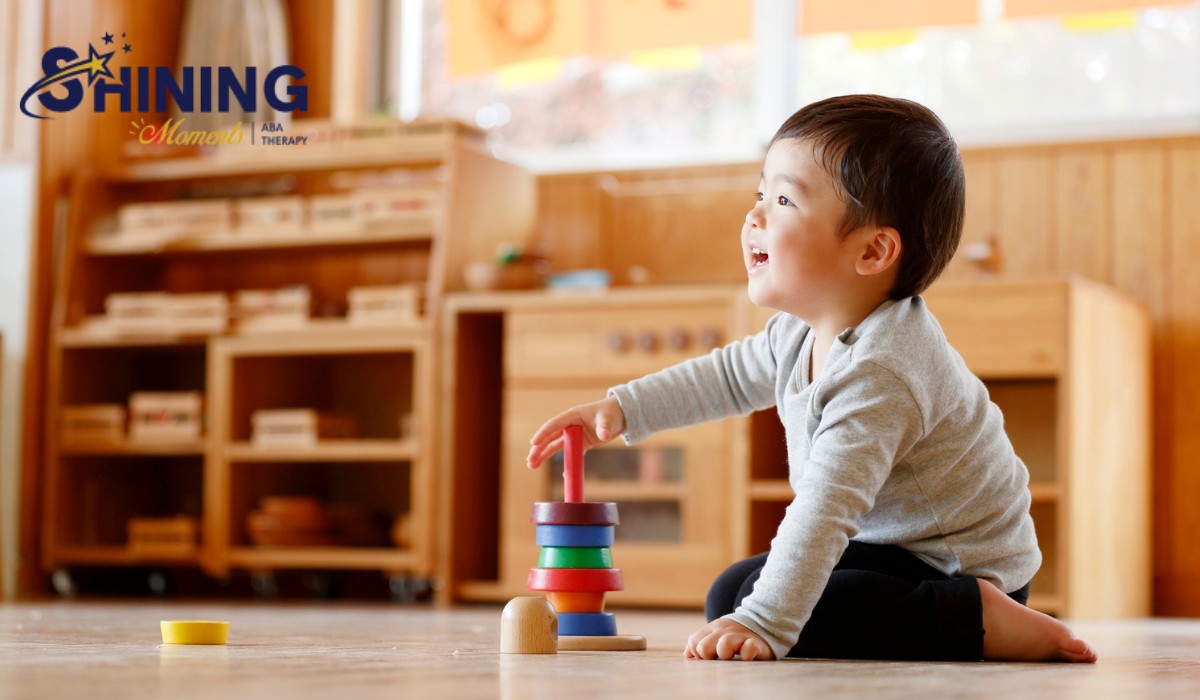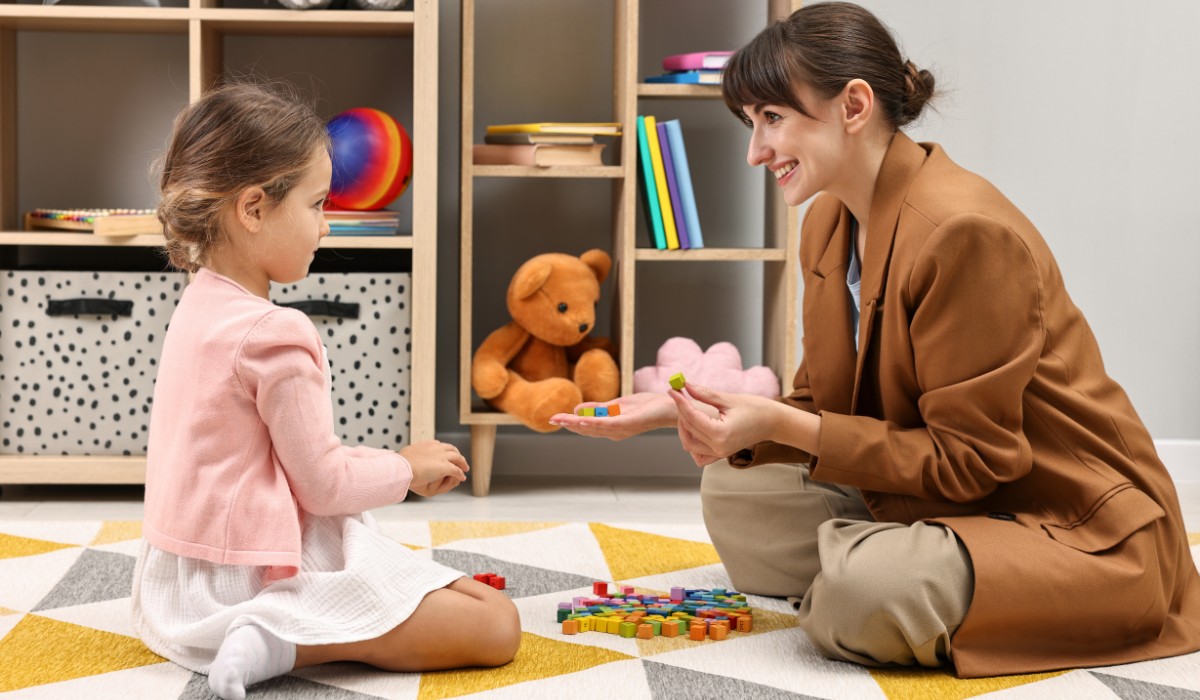Key Points:
- ABA therapy helps children with autism improve communication, social skills, and adaptive behaviors through structured, personalized approaches.
- Parents can support ABA progress at home using practical strategies that reinforce learning naturally.
- Early, consistent intervention in ABA therapy can lead to meaningful growth at school, home, and in social settings.
When your child struggles with learning, communication, or social interactions, it’s natural to wonder what support options can truly make a difference. Applied Behavior Analysis (ABA) therapy has become a leading approach for children with autism spectrum disorder (ASD), offering targeted strategies that foster skill development while addressing behavior challenges.
In this article, we’ll explore what ABA therapy really entails, how it can help your child, and practical ways parents can reinforce progress at home.
Can ABA Therapy Help Children with Autism?
Yes. ABA therapy can help children with autism by using structured, evidence-based strategies to teach new skills, reduce challenging behaviors, and improve communication and social interactions. Through consistent reinforcement, personalized programs, and measurable goals, children often make meaningful progress in areas such as daily living skills, language development, and emotional regulation.
While outcomes vary depending on each child’s needs and the quality of therapy, ABA has been widely recognized as an effective approach to supporting children with autism in reaching their potential.
Understanding ABA Therapy: What It Really Means
ABA therapy is grounded in the science of learning and behavior. Its goal is to help children acquire new skills, increase independence, and reduce behaviors that interfere with learning. Unlike generic therapy approaches, ABA is highly individualized—therapists design interventions based on your child’s strengths, preferences, and needs.
Some of the core areas ABA addresses include:
- Communication skills, such as requesting items or labeling emotions
- Social interactions, including turn-taking, greetings, and joint attention
- Daily living skills, like dressing, feeding, and hygiene
- Academic readiness and functional learning
By breaking complex skills into smaller, achievable steps, ABA therapists create consistent reinforcement systems. This structured approach not only promotes learning but also builds confidence and motivation.
 The Benefits of ABA Therapy for Your Child
The Benefits of ABA Therapy for Your Child
ABA therapy is more than a structured program—it’s a toolkit that supports learning in multiple dimensions. Parents often notice measurable improvements in key areas, which can directly impact their child’s independence and quality of life. Here’s how ABA therapy can help:
1. Improving Communication Skills
Communication is at the heart of human connection, yet children with autism often face challenges in expressing needs, emotions, or ideas. ABA therapy addresses these gaps by:
- Teaching functional language: Using words, gestures, or picture exchange to request items, express choices, and communicate feelings.
- Reinforcing attempts: Every effort to communicate, whether verbal or nonverbal, is rewarded to encourage repetition.
- Building conversation skills: Structured practice helps children take turns, respond appropriately, and expand vocabulary.
2. Enhancing Social Interaction
Social skills can be difficult to acquire naturally for many children with autism. ABA therapy introduces these skills step by step:
- Joint attention: Focusing on the same object or activity with another person
- Imitation: Learning to copy actions, facial expressions, or language
- Play-based social learning: Structured games and peer interactions reinforce sharing, cooperation, and empathy
3. Reducing Challenging Behaviors
Behavior challenges often emerge when children struggle to communicate or process sensory input. ABA therapists address these behaviors by:
- Identifying triggers: Understanding what leads to frustration or tantrums
- Teaching alternatives: Replacing disruptive behaviors with functional, socially appropriate actions
- Reinforcing positive behavior: Rewarding desirable behavior strengthens long-term habits
4. Building Independence in Daily Life
ABA therapy supports self-sufficiency by breaking daily tasks into manageable steps. Children learn to:
- Dress themselves, brush teeth, or feed independently
- Follow routines with minimal prompts
- Complete school or homework tasks using structured guidance
By promoting independence, ABA reduces frustration for both children and caregivers while fostering self-confidence.
How ABA Therapy Works: Key Techniques
ABA therapy relies on structured methods that are evidence-based and measurable. Here’s a closer look at some widely used techniques:
1. Discrete Trial Training (DTT)
DTT focuses on breaking skills into small steps. Each trial includes:
- A clear instruction
- A child’s response
- Immediate feedback or reinforcement
For example, a therapist may teach a child to identify colors by presenting one color at a time and providing positive reinforcement for correct answers. Over time, these discrete trials build complex skills.
2. Natural Environment Teaching (NET)
NET applies ABA principles in everyday situations. Children learn skills through real-life activities:
- Asking for a snack during snack time
- Practicing greetings with classmates or family
- Sorting toys by color or shape during play
This approach ensures learning is meaningful and transferable across settings.
3. Pivotal Response Training (PRT)
PRT targets “pivotal” areas that influence multiple behaviors, such as motivation and self-initiation. Key components include:
- Following the child’s interests to maintain engagement
- Reinforcing attempts naturally
- Encouraging choice-making and problem-solving
By focusing on pivotal behaviors, children often show broader improvements across communication and social skills.
4. Visual Supports and Prompting
Children with autism often benefit from visual cues:
- Picture schedules outline daily routines
- Flashcards teach vocabulary or emotion recognition
- Gestures paired with words guide responses
Prompting helps children respond correctly while gradually reducing assistance as skills improve.
 Practical Ways Parents Can Support ABA Therapy at Home
Practical Ways Parents Can Support ABA Therapy at Home
ABA therapy is most effective when learning continues beyond clinical sessions. Parents can play a critical role in reinforcing skills daily. Here’s how:
1. Create Structured Opportunities
Introduce learning moments throughout the day:
- Ask your child to request items instead of anticipating needs
- Use consistent phrases during routines: “Time to brush teeth” or “Let’s put shoes on”
- Incorporate choice-making: “Do you want a red cup or blue cup?”
2. Reinforce Efforts Positively
Celebrate all attempts at communication or cooperation:
- Praise verbal and nonverbal communication
- Provide small rewards or preferred activities for completing tasks
- Maintain consistency to strengthen learning
3. Use Visual Supports
Visual cues help children understand expectations:
- Picture charts for daily routines
- Flashcards for emotions or vocabulary
- Step-by-step visual guides for self-care tasks
4. Integrate Learning into Play
Play is a natural way to encourage skill development:
- Narrate actions during games: “Push car,” “Build tower”
- Encourage sharing and turn-taking
- Model problem-solving and social interaction
5. Track Progress
Keep simple records of skills learned or behaviors improved:
- Note successful attempts at communication
- Record new social or daily living skills
- Share observations with your ABA therapist to adjust goals
By actively participating in ABA therapy at home, parents can accelerate progress and help children generalize skills to multiple settings.
 Common Questions About ABA Therapy
Common Questions About ABA Therapy
Parents often have questions about how ABA works and what to expect. Here are answers to some of the most frequent concerns:
How long does ABA therapy take to show results?
Progress varies by child and the skill targeted. Many families see noticeable improvements in communication, social skills, and behavior within a few months of consistent therapy.
Will ABA therapy work if my child is nonverbal?
Yes. ABA techniques are highly adaptable. Therapists may use augmentative and alternative communication (AAC), such as picture exchange or speech-generating devices, to build functional communication skills.
Can ABA therapy be done at home and in school?
Absolutely. ABA programs can be designed to support learning across multiple environments, ensuring skills are practical and generalized. Collaboration between therapists, teachers, and parents is key.
Are there risks to ABA therapy?
ABA is evidence-based and widely considered safe. The most important factor is tailoring programs to each child’s needs, ensuring therapy is positive, reinforcing, and respectful of the child’s pace.
How ABA Therapy Supports Lifelong Growth
ABA therapy isn’t just about immediate skill acquisition—it lays the foundation for lifelong learning and independence. Children gradually:
- Develop effective communication and social skills
- Reduce frustration-related behaviors
- Build confidence in daily living tasks
- Engage more meaningfully with peers and family
When therapy emphasizes motivation, reinforcement, and individualized goals, children often generalize skills across settings—home, school, and social situations—making ABA a powerful tool for long-term growth.
 Bringing It All Together with Shining Moments ABA
Bringing It All Together with Shining Moments ABA
ABA therapy can transform how children engage with the world, providing tools to communicate, interact, and thrive. At Shining Moments ABA, programs are tailored to your child’s unique strengths and challenges. Therapists work closely with families to ensure progress carries over into everyday life, making each learning opportunity count.
If you’re in New Jersey or Maryland and looking for professional support, consider exploring ABA therapy in New Jersey or in Maryland with Shining Moments ABA. By integrating structured, evidence-based strategies with real-world practice, your child can build essential skills that support learning, independence, and connection.
Take the first step today—get in touch with us to learn how ABA therapy can make a meaningful difference for your child, whether at home, at school, or in everyday life.


